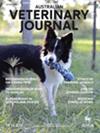Mastitis is the major disease affecting milk production of dairy cattle, and milk is an obvious substrate for the detection of both the inflammation and its causative infectious agents at quarter, cow, or herd levels. In this review, we examine the use of milk to detect inflammation based on somatic cell count (SCC) and other biomarkers, and for the detection of mastitis pathogens through culture-based and culture-free methods.
The use of SCC at a cow or bulk milk level to guide udder health management in lactation is well-established, and SCC is increasingly used to guide selective dry cow treatment. Other markers of inflammation include electrical conductivity, which is used commercially, and markers of disease severity such as acute phase proteins but are not pathogen-specific. Some pathogen-specific markers based on humoral immune responses are available, but their value in udder health management is largely untested. Commercial pathogen detection is based on culture or polymerase chain reaction, with other tests, for example, loop-mediated isothermal amplification or 16S microbiome analysis still at the research or development stage. Matrix-assisted laser desorption ionisation time of flight (MALDI-ToF) is increasingly used for the identification of cultured organisms whilst application directly to milk needs further development. Details of test sensitivity, specificity, and use of the various technologies may differ between quarter, cow, and bulk milk applications.
There is a growing array of diagnostic assays that can be used to detect markers of inflammation or infection in milk. The value of some of these methods in on-farm udder health improvement programs is yet to be demonstrated whilst methods with proven value may be underutilised.


